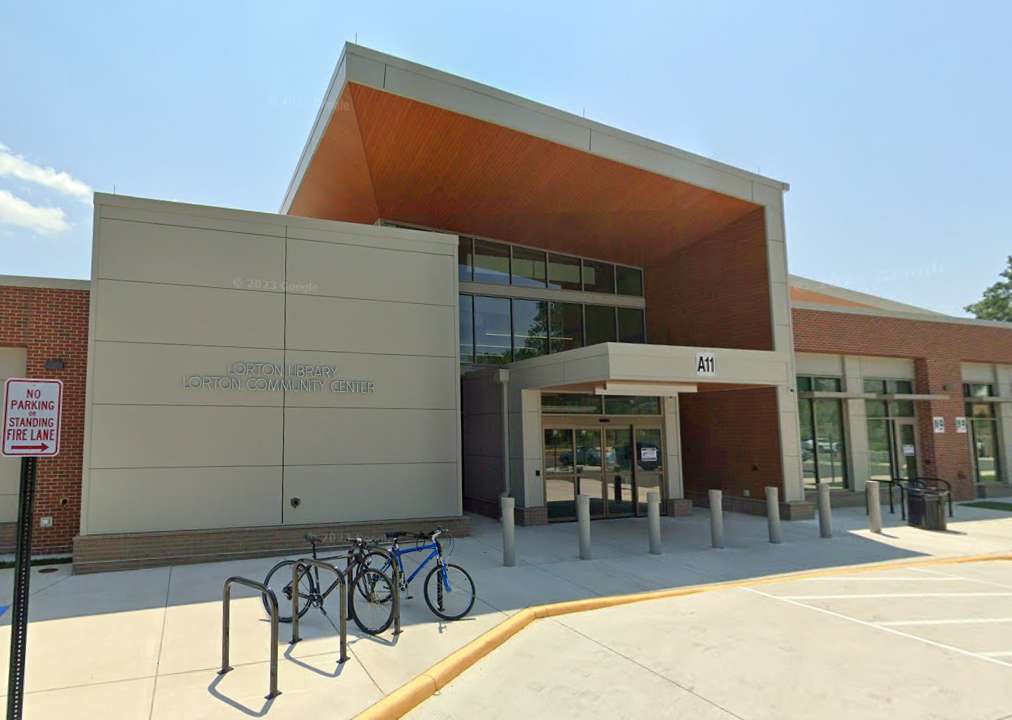
The Fairfax County Department of Neighborhood and Community Services (NCS) has fired an employee after she got arrested for allegedly engaging in a sexual relationship with a teenager.
Zoha Sultan, a 23-year-old woman from Lorton, was arrested on April 20 for her relationship with a teen attending the Lorton Community Center, where she worked, the Fairfax County Police Department announced yesterday (Tuesday).
According to NCS, the community center’s management “was made aware” on April 11 that an employee was having a relationship with a minor.
“Staff immediately notified Fairfax County Police Department and Child Protective Services,” NCS Division Director Chris Scales said. “The employee was immediately removed from the center’s work schedule and banned from the facility.”
NCS terminated Sultan’s employment on April 23, Scales said in the statement, which is being shared with Lorton Community Center participants.
The FCPD confirmed that the relationship was reported to its officers on April 11, prompting detectives to launch an investigation.
Sultan, who started working at the community center in January 2023, has been charged with four counts of indecent liberties with a minor by a person in a custodial position, according to the FCPD.
NCS and the police say anyone with additional information about the case can contact detectives at 703-246-7800, option 4. NCS can also be reached at 703-324-3480.
“We value the trust that families place in us to create a safe and nurturing environment where children can thrive and reach their full potential,” Scales said. “Their well-being and growth remain the highest priority for Fairfax County Neighborhood & Community Services.”
Located at 9520 Richmond Highway, the Lorton Community Center opened in October 2022 as part of a new campus that also hosts the Lorton Library and Lorton Park. The 30,000-square-foot facility includes space for the nonprofit Lorton Community Action Center, a senior center and a teen center.
Image via Google Maps
Lake Anne resident Alec Berry was excited when he learned a new pizza restaurant planned to move in underneath his condominium in Reston.
But that excitement and goodwill dissipated once construction started, and Berry discovered that Fairfax County planning staff had mistakenly approved plans for an exterior ventilation shaft to be installed along the side of the building — right outside his window.
“They put the shaft in and bolted it to the sidewall,” he told FFXnow. “I was given no notification of this and at roughly 7:30 in the morning, they have an impact drill into the side of my bedroom wall… So, that has soured my opinion of this whole thing.”
According to the county’s Department of Planning and Development, the application for a new Deli Italiano at 1631 Washington Plaza was processed through the county’s old planning and land use system, FIDO.
However, the system bypassed what should’ve been a required review by the Architectural Review Board (ARB) for exterior modifications because it was labeled as a “new tenant layout,” which typically implies no external changes.
“Fairfax County takes the preservation of its historic districts very seriously, requiring that any exterior modifications to buildings within these areas receive approval from the Architectural Review Board,” a county spokesperson said in a statement. “Unfortunately, in this case that did not occur due to an oversight in the approval process that did not flag the exterior changes.”
The county’s new system, PLUS, which launched with some hiccups in 2022, uses GIS technology to flag all applications in Historic Overlay Districts for review.
Nevertheless, the ARB can’t retroactively rescind its approval of Deli Italiano’s application, according to the spokesperson.
“We are dedicated to enhancing our processes and leveraging technology to uphold the integrity of our historic districts and ensure that such oversights do not occur in the future,” they said.
The central question now is whether Deli Italiano owner Yasser Baslios can continue construction after Berry appealed to the Lake Anne of Reston Condominiums Unit Owners Association (LARCA) and the Reston Association Design Review Board (DRB) — separate entities from the ARB — to stop the project.
Both the DRB and LARCA approved Baslios’s initial application for exterior modifications, including a mechanical duct with a rooftop exhaust fan, records show. But the DRB voted last month to defer a vote on Berry’s appeal to give staff more time to review the case.
Cara O’Donnell, RA’s director of communications and community engagement, told FFXnow there is no firm date yet for a decision on the appeal, but she anticipates it will come within the next few months.
“The DRB will determine if the project is permitted to remain as submitted and move forward with completion,” she said in an email.
In the meantime, Baslios is moving forward with construction as planned.
“We will follow the rules and regulations set by Fairfax County,” he told FFXnow.
Baslios disputes Berry’s recounting of events, including his description of constant construction noise in the early morning and on the weekends. He also noted the ventilation shaft is “not even close to being done.”
“We’re gonna come in as good neighbors,” he said. “We love the community very much and that’s why I keep…trying to do my best just to be in this community. I do appreciate this community, and then hope they understand that I’m doing all this just because I wanted to be at this community to make a big difference.”
Deli Italiano originally hoped to open at Lake Anne Plaza by early December 2021. The pizza chain has since opened a location in Herndon, and it can also be found in Great Falls.
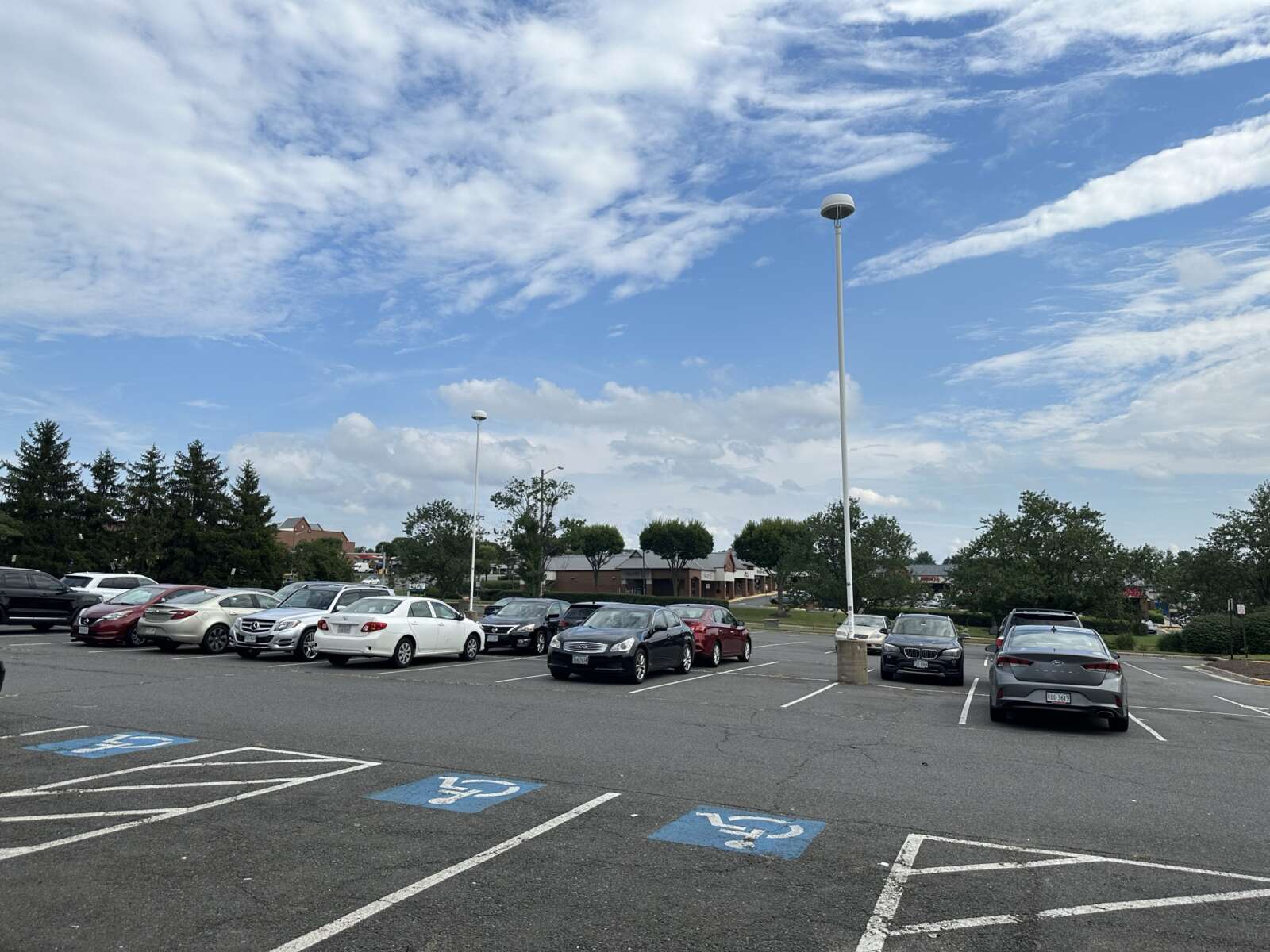
After updating its parking standards last fall, Fairfax County is conducting an online survey seeking feedback from the community on its current supply of accessible/ADA parking spaces.
The Fairfax County Board of Supervisors adopted new parking standards last September for the first time in 35 years through its Parking Reimagined initiative. Among other changes, the amendment created a tiered system for parking requirements based on a development’s density and proximity to transit.
A spokesperson with the county’s Land Development Services (LDS) says discussions about the potential impacts of the updated requirements on the supply of accessible parking prompted the board to approve a review of the standards.
“The county is analyzing whether a higher requirement to compensate for the change in baseline parking rates is appropriate and implementable,” the spokesperson told FFXnow.
Currently, accessible parking requirements are based on the overall number of spaces provided for a use, such as an apartment building, retail store or restaurant. The rates are based on federal Americans with Disabilities Act requirements as well as Virginia’s state requirements.
“Text was already added to the new requirements to preserve a stable amount of accessible parking even when general parking supply is reduced either with new parking rates or parking adjustments,” the LDS spokesperson said. “However, there was some concern that our new baseline rates would create a gap that requires less accessible parking.”
Potential changes could be broadly applied or targeted to certain circumstances. Additionally, there could be recommendations on the management of accessible spaces, such as standards for additional signage.
The online survey will be “essential in helping the department develop recommendations,” the LDS spokesperson said.
“The survey was created to get a better understanding of accessible parking experiences from those who need and use it,” they said. “From that, we can determine how we should look at potential changes to parking requirements.”
The survey is available until April 15.

The Fairfax County Board of Supervisors is marking Women’s History Month with a menstrual supply drive.
Starting today (Monday) through March 29, sites throughout the county will collect new, sealed packages of tampons, pads, liners and menstrual cups.
Those supplies will go to local shelters and nonprofits, including Bringing Resources to Aid Women’s Shelters (BRAWS), Western Fairfax Christian Ministries and Food for Others.
All Fairfax County Public Library branches are collecting donations, as are all nine magisterial district offices, Board of Supervisors Chairman Jeff McKay’s office and the Sully Community Center. The PARC at Tysons (8508 Leesburg Pike) is also accepting supplies from 6 a.m. to 7 p.m. tomorrow (Tuesday).
Support our local shelters and nonprofits by donating new and sealed packages of tampons, pads, liners, and menstrual cups, from March 4-29 https://t.co/pHXnhzXeow
Questions? Email: Kimberly.Jaramillo@fairfaxcounty.gov pic.twitter.com/yeziKqOh4U
— Fairfax County Government 🇺🇸 (@fairfaxcounty) February 29, 2024
At the board’s Feb. 20 meeting, Providence District Supervisor Dalia Palchik announced that all supervisors would support the drive to help community members “for whom access to menstrual supplies can pose a financial burden.”
“These essential hygiene products are costly, and the lack of access to safe and clean menstrual products can negatively impact someone’s overall physical and emotional well-being,” Palchik said at the meeting.
This is the first time that Fairfax County has conducted this drive, and it comes more than a year after Virginia stopped charging sales tax on menstrual products.
BRAWS, one of the supply drive’s beneficiaries, says one in five Virginia residents don’t have access to needed menstrual supplies.
“By hosting this drive with collection sites all over the county, we are raising awareness while helping meet these basic needs,” Palchik wrote in a statement to FFXnow.
Other Women’s History Month events in the area include classes and programs from the Fairfax County Park Authority and a panel of local female authors at the City of Fairfax Regional Library.
Photo via Natracare on Unsplash
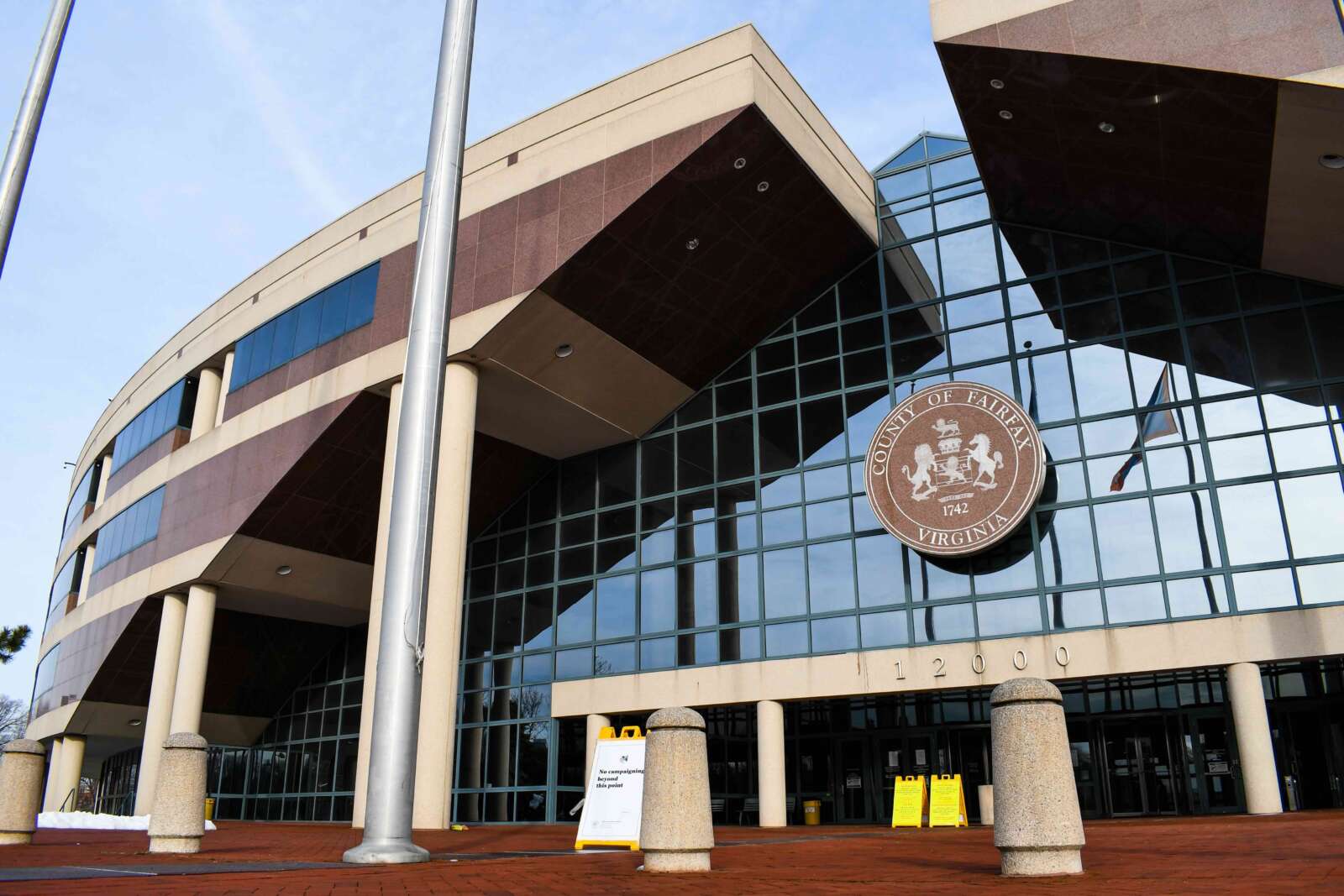
As anticipated, Fairfax County is looking at a tight budget for the coming year that will once again lean primarily on residential property owners to offset a declining commercial tax base.
County Executive Bryan Hill has proposed a 4-cent increase in the real estate tax rate, even as he presented an advertised fiscal year 2025 budget to the Fairfax County Board of Supervisors yesterday (Tuesday) that largely limits spending to obligations like public schools and employee compensation.
If adopted, this would be the county’s first real estate tax rate increase in six years, Hill said in a message to the board. Last year, Hill proposed a flat tax rate that the board ultimately reduced by 1.5 cents to $1.095 per $100 of assessed value, though property owners still saw their bills go up by $412, on average, due to rising home values.
The proposed tax rate of $1.135 per $100 for FY 2025, which starts on July 1, would raise the average tax bill by just over $524 and generate $129.28 million in revenue, according to the county.
“We are seeing some residential growth, but our commercial values have declined, resulting in an overall real estate growth of just over 2.7%,” Hill said. “Paired with significant expenditure pressures — particularly for employee pay and benefits, transportation requirements, and continued inflationary impacts — balancing this proposed budget has required difficult decisions.”
Home values up, commercial values down
Real estate tax revenue provides about 66% of the county’s general funds, which supports most county operations, from public safety agencies to libraries and parks. For FY 2025, more than three-quarters of that revenue (76.7%) will come from residential owners, who are facing an average assessment increase of 2.86% for 2024.
Though the number of home sales in the county last year declined, prices have continued to climb “due to low inventory,” Hill said. The average value of the county’s over 357,000 taxable residential properties for 2024 is $744,526, up from $723,825 in 2023.
By contrast, non-residential property values have dropped for the first time in three years by 1.24%, a dip mostly driven by a struggling office market. About 21.6 million square feet, or 17.2%, of the county’s 119.5 million square feet of office space is vacant — an uptick from last year’s rate of 16.7%, which was already a 10-year high.
With another 1 million square feet of office space under construction, mostly in Metro’s Silver Line corridor, the pressure to revitalize or replace under-utilized office buildings will likely only intensify going forward.
“That space is going to be snapped up quickly, which is going to create situations around our county that will be then vacant,” Hill said when asked by Franconia District Supervisor Rodney Lusk about possible remedies. “We have to figure out ways to fill those spaces, whether it is converting or doing something different on that plot of land. We have done a pretty good job in certain areas of revitalizing…but we need to do more.”
Schools and compensation dominate spending
With some growth projected from other sources, including an 8.8% increase in personal property taxes and a proposed 10-cent-per-pack increase in taxes on cigarettes, the county anticipates getting $363.22 million more in revenue than it did this budget year.
However, Hill says he proposed spending only on “adjustments which I feel are essential to maintain the quality workforce and dependable services upon which our residents rely.” Read More
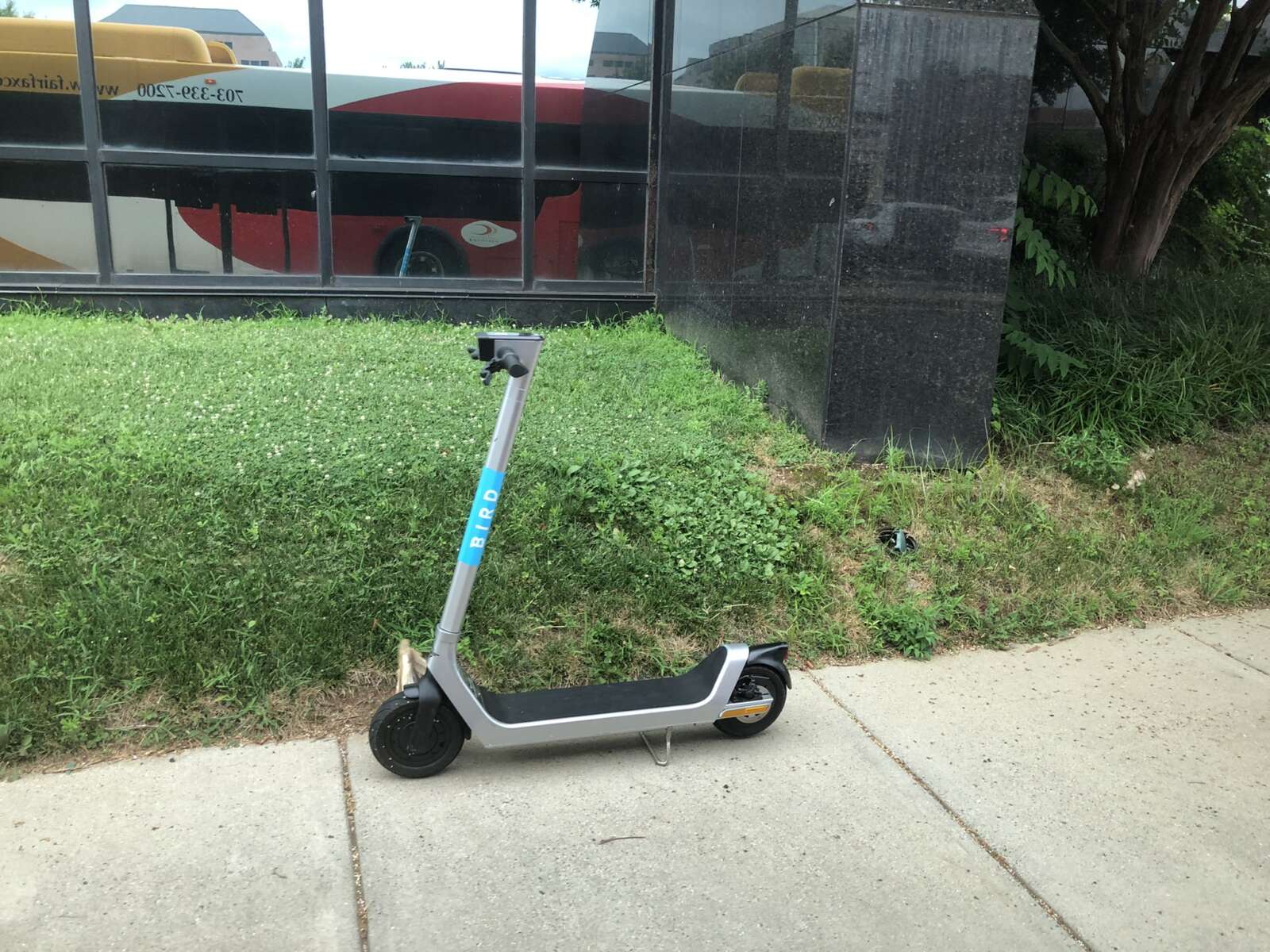
Fairfax County’s only electric scooter provider will continue operating even after filing for bankruptcy last month.
The company, Bird, will also maintain its scooters in Fairfax City, where it’s one of two companies in a pilot program.
“We expect to continue operations in Fairfax and Fairfax County as normal and we look forward to working with the city and county administration as a partner into the future,” a Bird representative wrote in an email to FFXnow.
The county and city have both been told by the company that service will go on. Bird has permission to operate 300 devices in Fairfax County, while the City of Fairfax generally permits up to 250 devices per company.
Bird and Superpedestrian’s LINK got permission to bring their products to Fairfax County in July 2021 following a November 2019 county board ordinance regulated shared mobility devices. Superpedestrian recently stopped all U.S. operations, though it had already been dropped from the county’s operator list after failing to renew its permit in January 2022.
The county doesn’t appear to have any new partners in the offing at the moment.
“Anyone may submit a Shared Mobility Device Operator Permit Application for review,” wrote Rebecca Makely, director of the county’s department of cable and consumer services, in an email to FFXnow.
Bird’s shared mobility devices saw nearly 20,000 rides between July and December 2023, according to data provided by the county, with an average ride distance of just over a mile during that period.
FairfaxCity authorized a shared mobility pilot program of its own in May 2019, but has yet to establish a permanent program. Bird and San Francisco-based Lime are currently authorized under the pilot, which the city council unanimously voted to extend through June 30, 2024 at a Jan. 9 meeting.
City staff expects to develop a proposal for a more permanent program by the time this extension ends.
“There was a lot of bumpiness during Covid, but a lot of the operations and usage have stabilized, and we feel like we can now begin to transition to a more permanent, long-term program,” Chloe Ritter, the city’s multimodal transportation planner, said at the meeting.
While the city doesn’t expect Bird’s bankruptcy filing to have immediate effects, it could inform program planning.
“We can’t predict what’s going to happen in six months or two years, but I think it’s a good reminder for us to keep our program flexible to respond to those kinds of things,” Ritter said.
In neighboring Arlington County, scooter and e-bike provider Veo recently declined to renew its permit, citing market conditions. Superpedestrian is also exiting Arlington as it shutters its U.S. business.
Bird and Bird-owned Spin still operate in Arlington, as does Lime, which announced near the end of 2023 that it had logged 500 million total rides on its devices.

Updated at 6 p.m. — The GW Parkway has reopened after closing for the snow, the National Park Service announced, though both north and southbound traffic is limited to a single lane in the construction area.
Earlier: Like the snow that triggered them, facility closures and service delays are piling up in Fairfax County.
After Fairfax County Public Schools determined last night that it will have a snow day today (Friday), the Fairfax County government announced shortly before 7 a.m. that it will instead close and grant employees administrative leave — a reversal of an earlier plan to operate as usual.
The closure includes the Fairfax County Government Center, which means that early voting for the 2024 presidential primaries won’t start today as scheduled. Instead, early voting will begin tomorrow (Saturday) from 9 a.m. to 5 p.m. at the Fairfax County, Mount Vernon and North County government centers.
The closure also applies to all Fairfax County Park Authority facilities and the county’s circuit, general district and juvenile and domestic relations courts. Neighborhood and Community Services has also preemptively postponed the “Stuff the Bus” food collection event that was scheduled for tomorrow (Saturday) outside the West Falls Church Giant (7235 Arlington Blvd).
Due to the snow, the start of #earlyvoting has been rescheduled to tomorrow, Saturday, Jan. 20.
Three locations will be open from 9 a.m. to 5 p.m.: https://t.co/ma58h6E061#VoteEarly #GoVote pic.twitter.com/LHHTXAI2yc
— Fairfax County Votes (@fairfaxvotes) January 19, 2024
Inclement Weather Update (Friday, January 19, 7 a.m.)
❄️FCPA facilities are closed all day.
❄️Classes, camps and events held at Rec Centers and FCPA facilities are cancelled.
Please check the website for more info on closures before visiting: https://t.co/mv3MG2V0md pic.twitter.com/jOs3ypYZFf— Fairfax County Parks (@fairfaxparks) January 19, 2024
For the second time this week, the northern section of the George Washington Memorial Parkway from I-495 in McLean to Spout Run in Arlington has been temporarily closed to traffic due to the weather.
“This closure is necessary to ensure the proper treatment of the roadway and to restore the parkway to safe travel conditions,” the National Park Service said. “Crews will work diligently to treat the road for safe passage of drivers. Drivers should anticipate delays in reopening the northern section of the parkway as crews are required to use smaller equipment than usual to accommodate the lane widths and configurations.”
The NPS has said that it will shut down the roadway, which is under construction, if two or more inches of snow are forecast.
Other travel impacts include reduced Metrobus service, including some suspended routes and detours. Fairfax Connector is operating regular service, but some routes are making detours, particularly in the Herndon area.
A light snow is expected to continue falling into this afternoon, potentially adding another one to two inches, according to the Capital Weather Gang, which reported that more than three inches had already been recorded at Dulles International Airport before 9 a.m.
That snowfall comes on top of the two to five inches that fell on Monday and Tuesday, most of which hadn’t yet melted. That storm was the first time that the D.C. area had gotten over an inch of snow since 2022.
The National Weather Service, which has a Winter Weather Advisory in effect for the D.C. area through 7 p.m., warns that visibility will stay reduced along the I-66 and Route 50 corridors.
Light to moderate snow and reduced visibilities continue along and north of I-66/US-50 through this afternoon. Slick travel concerns will continue with a refreeze tonight as low temperatures fall into the teens. #MDwx #VAwx #WVwx #DCwx pic.twitter.com/p8klfUSsqV
— NWS Baltimore-Washington (@NWS_BaltWash) January 19, 2024
8:47 am: Light snow falling now seems likely to persist into afternoon. Some bands moderate/briefly heavy. 1-2" can fall before it winds down: https://t.co/fqTPCFWPIS
So far..
2.3 inches at National (6.4 this week)
3.1 inches at Dulles (7.5 this week) pic.twitter.com/ZGjmA15RKh— Capital Weather Gang (@capitalweather) January 19, 2024
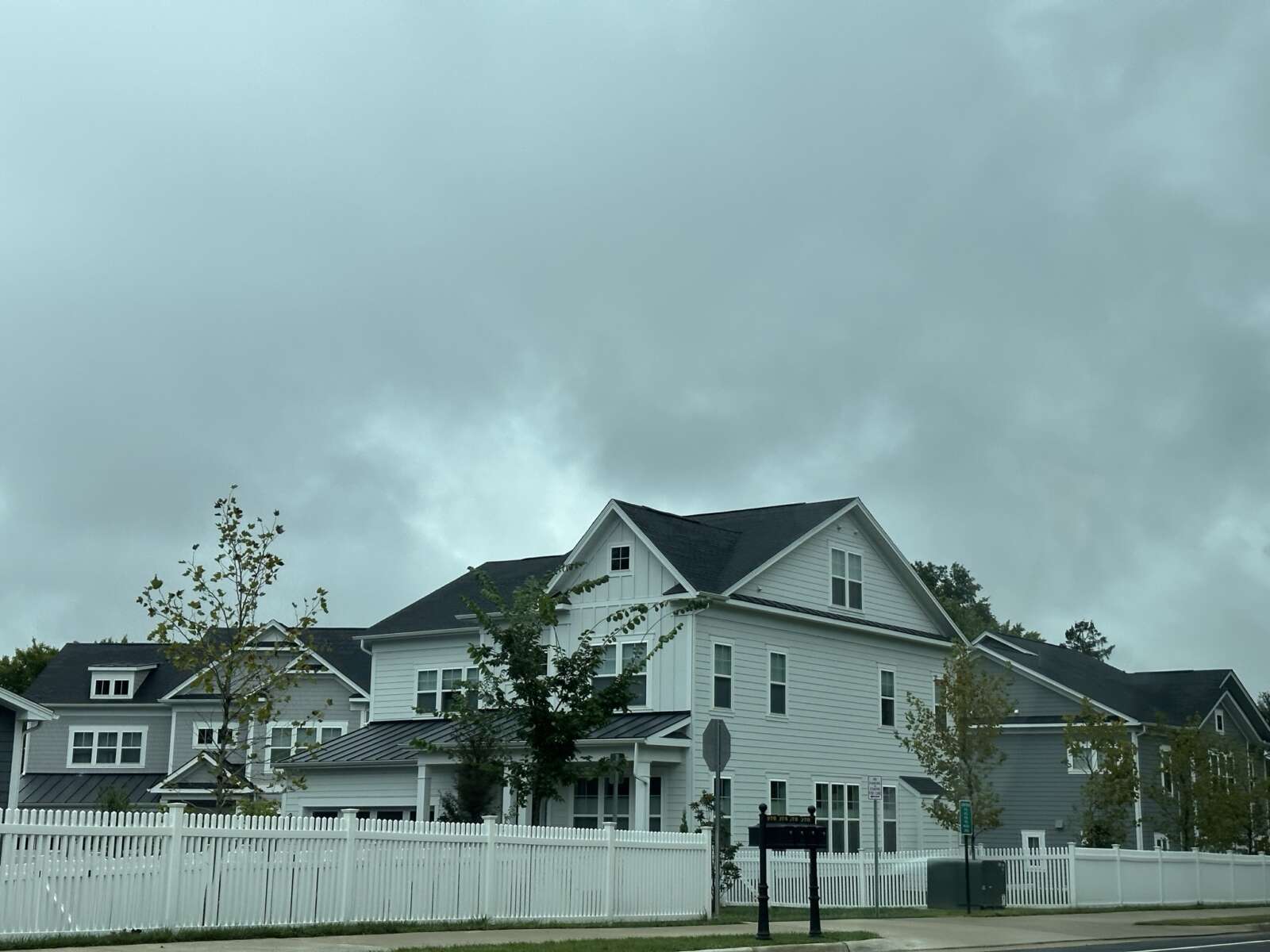
In their quest to boost the region’s limited housing supply, Northern Virginia leaders have explored a variety of potential solutions.
Arlington and Alexandria in particular garnered plenty of headlines — and legal scrutiny, in the county’s case — when officials voted separately last year to allow more dense housing in areas previously reserved for single-family detached homes, among other zoning reforms.
Fairfax County, however, has no plans at the moment to follow in its neighbors’ footsteps by eliminating single-family-only zoning, according to Board of Supervisors Chairman Jeff McKay.
Instead, the county hopes to increase and diversify its housing stock with more targeted policies, such as looser rules for accessory living units (ALUs) and workforce housing requirements, that can accommodate the different character and needs of different neighborhoods.
“Every county and city is different, and so, I’m not in a position to critique what Arlington and Alexandria have done,” McKay told FFXnow. “But we’ve been careful in Fairfax County to make sure that we can grow our affordable housing base and, at the same time, protect the integrity of our single-family neighborhoods…They’re in a different place [in their development schedule], and so, they have reached the point where they believe the only way they can address the ‘Missing Middle’ is to eliminate single-family [only] development. We are nowhere close to that point in Fairfax County.”
Size matters
The D.C. metropolitan area ranks 10th in the U.S. for “pent-up housing demand” due to a lack of supply and elevated mortgage rates, according to the National Association of Realtors. The tight supply fuels high prices that are expected to keep rising in 2024, peaking in June at a median of $935,930 for a single-family house, per a Northern Virginia Association of Realtors and George Mason University forecast.
Faced with limited space for new development, proponents of Arlington’s “Missing Middle” zoning changes and Alexandria’s “Zoning for Housing” initiative argued that opening up single-family-exclusive lots to different types of housing, such as duplexes and townhouses, will allow more units to be built, easing market pressures that have sent median single-family sales prices soaring over $1 million in both localities.
Though those measures didn’t exactly pass with ease, eliminating single-family-only zones in a place of Fairfax County’s size would be “a little bit more challenging,” says Jill Norcross, executive director of the nonprofit advocacy group Northern Virginia Affordable Housing Alliance (NVAHA).
“There’s just a lot more people, a lot more housing units and communities,” she said.
Of the 426,412 housing units in the county as of 2022, 46.1% are single-family detached houses, while 29.6% are multi-family residences and 24.2% are single-family detached homes, per the county’s most recent demographic report. In comparison, Arlington and Alexandria, respectively, are about 70 to 75% multi-family housing.
Parts of Fairfax County are dominated by single-family houses, which range from the mansions of McLean and Great Falls — the kind that Arlington leaders have said they’re trying to avoid — to older, smaller ranch-style or split-level homes like those found in Annandale or Groveton. Then, there are areas like Reston, where more than 80% of homes are townhouses, apartments or condominiums, according to Hunter Mill District Supervisor Walter Alcorn.
That variety means “a one-size-fits-all answer here is no good,” McKay says. Read More
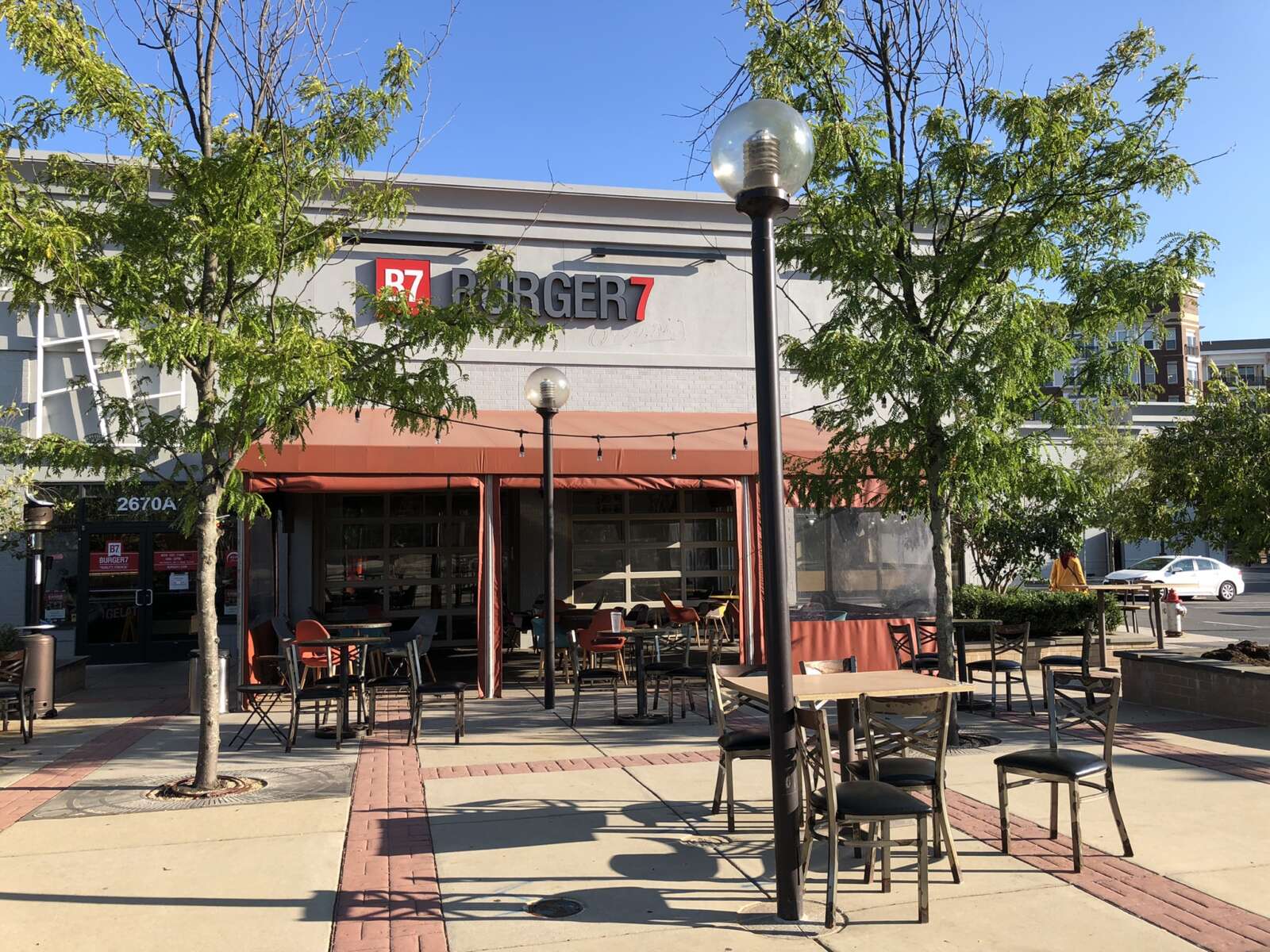
Almost a year after ending its state of emergency for COVID-19, Fairfax County is expected to codify new rules for outdoor dining that were introduced in response to the pandemic.
A proposed zoning ordinance amendment will automatically let restaurants, bars and other food service establishments set up temporary seating areas where patrons can eat and drink outside, unless the area is in a parking lot, in which case an administrative permit will be needed.
Outdoor dining areas that use permanent furniture will still need to get the county’s approval during a site plan or building permit review.
“Outdoor dining can significantly improve the pedestrian experience throughout the County,” a Dec. 15 staff report says. “By activating the street-level pedestrian environment, it can increase vibrancy and make commercial areas more social and active.”
Currently, the county doesn’t have any official standards for outdoor dining, though outdoor seating is permitted as an accessory use by right — meaning a separate approval isn’t required — in all zoning districts that allow restaurants.
To support businesses while still trying to limit Covid’s spread by reducing crowds, the Fairfax County Board of Supervisors adopted an emergency ordinance on July 14, 2020 that allowed existing establishments to designate outdoor areas for dining and fitness activities without any additional approvals, though they still had to meet some site and operational requirements.
Many requirements under that temporary ordinance, which is set to expire on March 1, have been carried over to the new proposal, including a stipulation that all outdoor dining must be on impervious surface, such as a patio, sidewalk or parking lot.
The area must also be clearly marked and separated from vehicle parking spots and pedestrian access points. Tents larger than 900 square feet must be approved by the fire marshal’s office, which is also responsible for permitting any heaters or open flames under tents.
In a change from the emergency rules, outdoor dining areas will be limited to 50% of the size of indoor dining rooms as determined by a restaurant’s floor area, rather than its occupancy limit.
“In staff’s opinion, limiting the outdoor dining area based on the indoor seating area is a more accurate way to determine the allowable outdoor dining area,” the staff report said. “…This is also helpful in investigating potential violations, as DCC Investigators would be able to easily measure the outdoor dining and indoor dining area during their investigation to determine compliance.”
Acknowledging that using floor area could put smaller restaurants at a disadvantage, staff proposed alternatives that would either forgo a size limit or set a range. For patio and sidewalk dining areas, the suggested range is up to 250 square feet or 25 to 75% of the indoor dining area, whichever is greater, while areas in parking lots could be 500 square feet to 1,000 square feet per establishment.
Under the proposed amendment, establishments will no longer be required to provide separate parking for outdoor seating areas, a change implemented by the Parking Reimagined initiative that took effect on Monday, Jan. 1.
County staff also recommend tying the use of outdoor dining areas to a business’ regular operating hours. Since some establishments can be open as late as 2 a.m., prohibitions before 7 a.m. or after 10 p.m. for outdoor dining areas directly adjacent to or abutting single-family developments could be considered.
The proposal will get a public hearing before the Fairfax County Planning Commission on Jan. 10, followed by a Board of Supervisors vote on Feb. 6.
If the amendment is approved, the county will follow in the footsteps of Vienna, Herndon, Alexandria and Arlington, which have all approved outdoor dining regulations within the past couple of years.

Local government offices are closing early today (Friday) to give staff a head start on Christmas weekend.
With Christmas Eve falling on Sunday (Dec. 24) this year, Fairfax County, Fairfax City and the towns of Vienna and Herndon are all instead observing the occasion with a half-day today. All local government offices will shut down at noon, though schedules vary for some other public facilities and services.
Government offices will close all day on Monday (Dec. 25) for Christmas. The county courts, which are closing at noon today, will pause operations through Tuesday, Dec. 26, as will Fairfax County Public Schools, whose students have been on winter break since Dec. 18.
Here are other notable closures and schedule changes coming for the holidays:
Trash and recycling
Fairfax County won’t provide trash and recycling collection services on Christmas Day, bumping all customers back by a day throughout the week. The I-66 Transfer Station and I-95 Landfill Complex’s recycling and disposal centers will be closed Sunday and Monday.
The Town of Vienna and Fairfax City will both collect waste and recycling for both Monday and Tuesday customers on Dec. 26. Vienna won’t pick up brush and yard waste that day.
The Town of Herndon will make trash pick-ups as usual, but Monday recycling will be collected on Tuesday instead.
Transportation
Metro is running modified service on both Christmas Eve and Christmas Day, with trains and buses following Sunday schedules. Rail stations will be open from 7 a.m. to midnight.
Fairfax Connector will operate on a Sunday service schedule on Christmas Day, and its customer service center will be closed. In Fairfax City, the CUE bus system will follow its regular schedules except on Dec. 25, when the service will be closed.
Like it did for Thanksgiving, the Virginia Department of Transportation is suspending most highway work zones and lane closures on major roads, starting at noon today and continuing until noon on Tuesday, Dec. 26. Rush-hour tolls for the I-66 Express Lanes inside the Capital Beltway will be lifted on Christmas Day.
Community centers
The McLean Community Center will be closed on both Christmas Eve and Christmas Day.
The Reston Community Center will close its Lake Anne facility on both days, but Hunters Woods (2310 Colts Neck Road) will open from 9 a.m. to 2 p.m. on Sunday, Dec. 24. The Terry L. Smith Aquatics Center will be open from 9 a.m. to noon on Sunday before closing for Christmas Day.
The Herndon Community Center is open today from 7 a.m. to noon and Saturday from 7 a.m. to 6 p.m. It will close on Dec. 24-25. The Bready Park Tennis Center and Herndon Centennial Golf Course will also be closed on Christmas.
The Vienna Community Center will be closed on Christmas Eve and Christmas Day. It’s also observing holiday hours of 8 a.m. to noon today and 7 a.m. to 10:30 p.m. from Dec. 26-29.
Libraries, Parks and Recreation
Fairfax County Public Library will close all branches at noon today, followed by closures on Christmas Eve and Christmas Day. Libraries will open tomorrow (Saturday) according to their regular hours.
All Fairfax County Park Authority facilities are open today except for the carousel at Clemyjontri Park in McLean and Sully Historic Site in Chantilly. For Christmas Eve, park visitor centers and other amenities will be closed, but all rec centers will open from 8 a.m. to noon, except for the George Washington Rec Center in Mount Vernon, which is opening at 9 a.m.
The park authority will close all facilities for Christmas Day.
In Fairfax City, both the Fairfax Museum and Visitor Center and Historic Blenheim are closed through Dec. 25.

